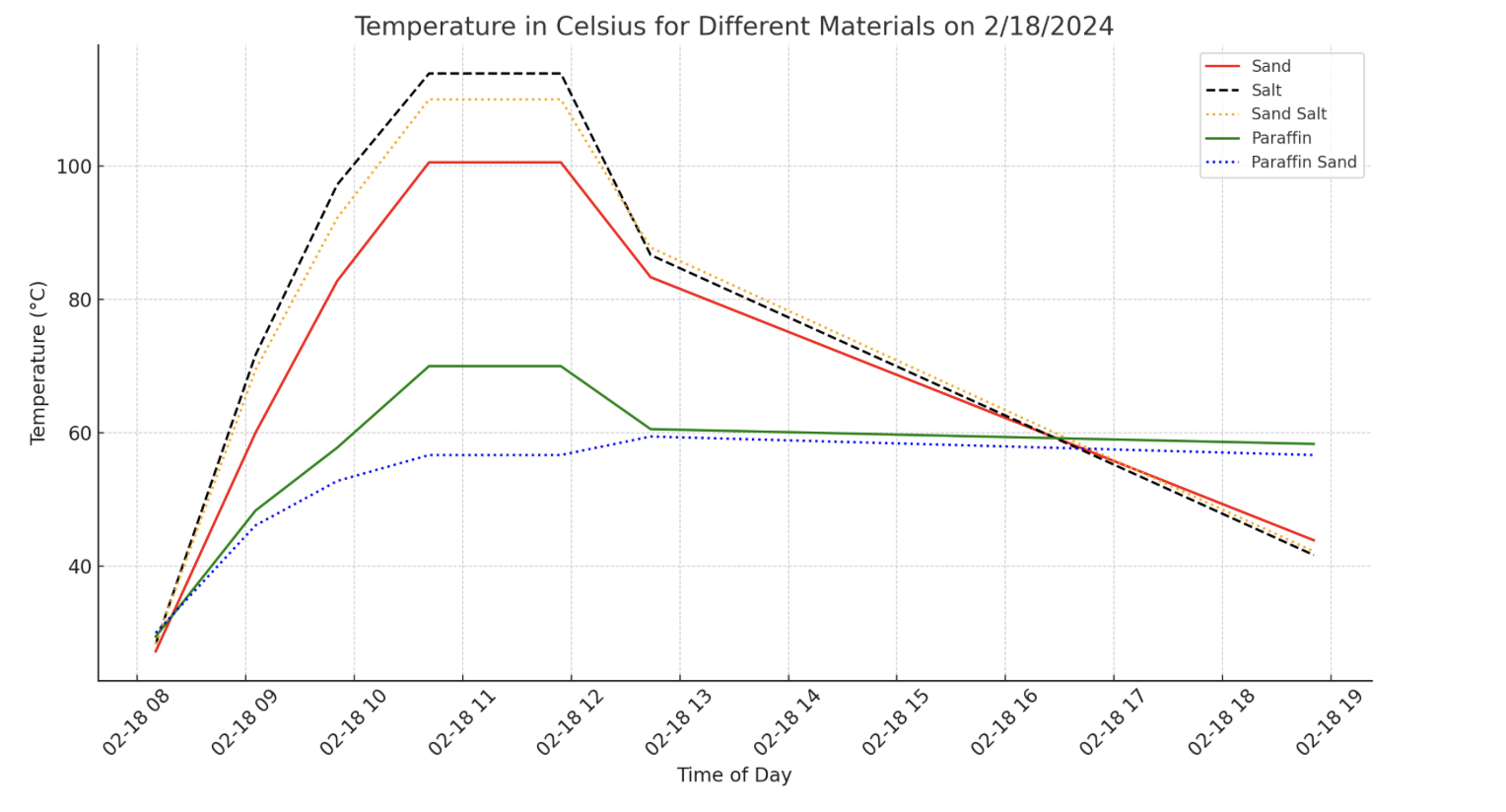
Actual test results using a 2 inch diameter solar vacuum tube of 18 inch length on 18 March 2024. Salt had the highest temperature, but paraffin held temperature the longest.

Infinity Turbine Sales | Plans | Consulting TEL: 1-608-238-6001 Email: greg@infinityturbine.com
For Data Centers Gas Turbine Waste Heat to Power Owners of Cat Solar Gas Turbine Generators and the new Boom Aero Derivative Gas Turbines Generators: Take your waste heat and make additional Combined Cycle power or generate cooling for your data center... More Info
IT250 Supercritical CO2 Gas Turbine Generator Silent Prime Power $999,000 250 kW (natural gas, solar thermal, thermal battery heat) ... More Info
IT1000 Supercritical CO2 Gas Turbine Generator Silent Prime Power $3M 1 MW (natural gas, solar thermal, thermal battery heat) ... More Info
IT50MW Supercritical CO2 Gas Turbine Generator Silent Prime Power $50M (natural gas, solar thermal, thermal battery heat) ... More Info
Data Center Consulting Prime power and energy consulting for AI and data centers... More Info
Quantum Super Turbine... Developing in 2026: High efficiency topping cycle turbine generator with bottoming cycle cooling, specifically designed for Data Centers with back-end combined cycle modules for cooling, hydraulic, or heat pump capabilities... More Info

Actual test results using a 2 inch diameter solar vacuum tube of 18 inch length on 18 March 2024. Salt had the highest temperature, but paraffin held temperature the longest. |
|
Analysis of Paraffin Wax as a Phase Change Material During the charging process, the Paraffin wax took around 3 hours and 5minutes and the discharge process comparatively long duration than that of charging process i.e. 15 hours and 28 minutes and still the temperature is around 49.0355°C and still the a lot of energy is stored in the sample as the storage duration prolongs the sample releases the heat energy In order to improve the performance of the Paraffin wax by adding suitable amount of micro or nano particles in to it, the care should be taken that the micro and nano particles disperses homogenously throughout the sample otherwise the micro or nanoparticle settle at the bottom experimentation. |
|
Paraffin Wax As a Phase Changing Material PCM Based Composites Containing Multi-Walled Carbon Nanotubes for Thermal Energy Storage (TES) Development Thermal energy storage (TES) technologies are considered as enabling and supporting technologies for more sustainable and reliable energy generation methods such as solar thermal and concentrated solar power. A thorough investigation of the TES system using paraffin wax (PW) as a phase changing material (PCM) should be considered. One of the possible approaches for improving the overall performance of the TES system is to enhance the thermal properties of the energy storage materials of PW. The current study investigated some of the properties of PW doped with nano-additives, namely, multi-walled carbon nanotubes (MWCNs), forming a nanocomposite PCM. The paraffin/MWCNT composite PCMs were tailor-made for enhanced and efficient TES applications. The thermal storage efficiency of the current TES bed system was approximately 71%, which is significant. Scanning electron spectroscopy (SEM) with energy dispersive X-ray (EDX) characterization showed the physical incorporation of MWCNTs with PW, which was achieved by strong interfaces without microcracks. In addition, the FTIR (Fourier transform infrared) and TGA (thermogravimetric analysis) experimental results of this composite PCM showed good chemical compatibility and thermal stability. This was elucidated based on the observed similar thermal mass loss profiles as well as the identical chemical bond peaks for all of the tested samples (PW, CNT, and PW/CNT composites). |
|
THERMAL ENERGY STORAGE USING PARAFFIN WAX AND STABILITY STUDY OF THE PHASE CHANGE MATERIAL CONTAINING NANOPARTICLES Nanoparticles may only lead to a 13 percent increase in efficiency due to coagulation. |
|
Home Tests as of 17 January 2024 Using a solar vacuum tube filled with:Sand: Max temperature without mirror reflectors: 300 F (149 C)5pm: 148 F (64 C)Next Morning: 84 F (29 C)Paraffin:Max temperature without mirror reflectors: 250 F (121 C)5pm: 140 F (60 C)Next Morning: 95 F (35 C)This test was conducted over a year and sand thermal storage would get hotter, but release heat faster. Paraffin wax was slower to heat up, but slower to release heat. Ultimately a hybrid of the two is the best solution. |
| CONTACT TEL: 1-608-238-6001 Email: greg@infinityturbine.com | AMP | PDF |